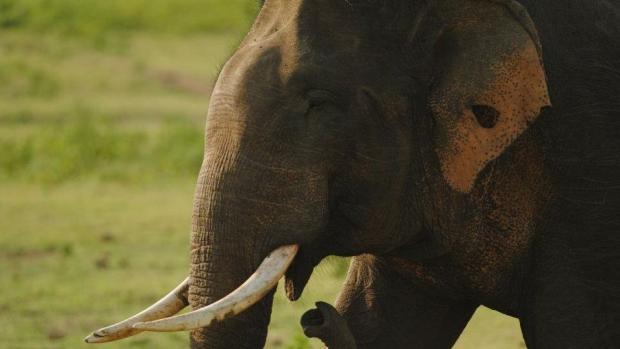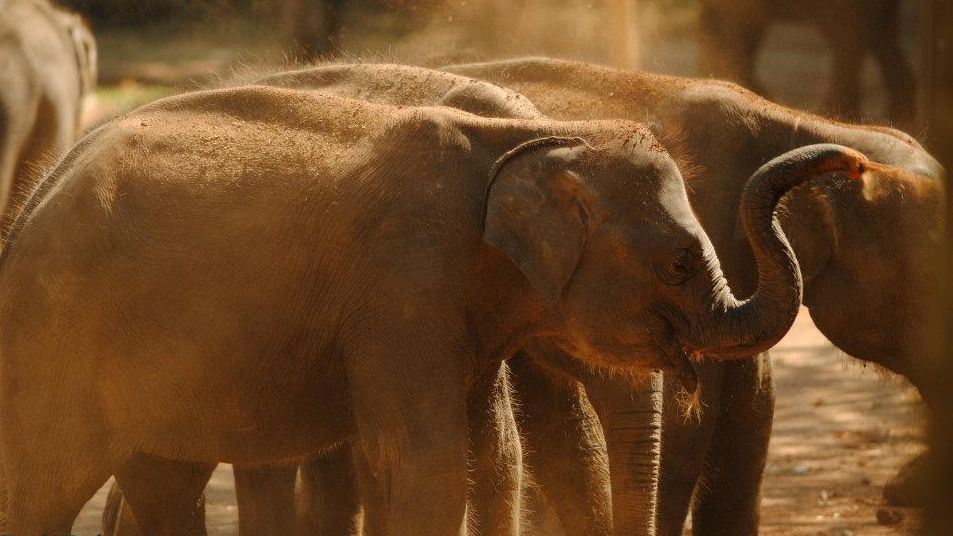
Photos : Purabi Deshpande / Research Matters
Spanning across the shared boundaries of north-east India and southern Nepal, the ‘Terai’ conjures images of emerald green marshy grasslands, an ideal haven for life to flourish. However, with these rich natural bounties, the landscape also creates conflict for shared spaces and resources between species, and one such is the conflict between humans and elephants. In a recent study published in the journal Wildlife Biology Dr Dinesh Neupane, Postdoctoral Fellow at Arkansas State University and his colleagues found that the land and home use patterns have an impact on the Human-Elephant Conflict (HEC).
The largest emerging threat to the conservation of the Asian elephant is the issue of Human-Elephant Conflict. Of all of the animals that come into conflict with people in Nepal, elephants account for 25% loss in crop production and 70% of human casualties with 10 people being killed each year. An average of 2 elephants are lost each year because of retaliatory persecution, severely impeding conservation efforts.
“With only around 120 wild elephants remaining in the wild, in this scenario, even a loss of one elephant each year could affect the survival of a viable population of elephants”, says Dr. Neupane who has been studying HEC in this landscape.
Preventing conflict especially in this region is critical, as Nepal, in addition to having a resident population, also receives a transboundary seasonal movement of elephants from India. “The residential herds of elephants are small and their damage is low compared to large migratory herds. The eastern transboundary herds that enter Nepal don’t have any large protected areas such as national parks. Therefore, croplands and villages are the only places for these elephants to find food”, remarks Dr. Neupane. Conflict thereby, puts the population of elephants at risk in both these countries and hence there is a pressing need to understand the problem at a finer scale in order to create preventive management strategies.
As the saying goes ‘change starts at home’, the researchers of this study, have quite literally, analysed how HECs can be minimised by understanding how we keep our homes and farms. After analysing the perspectives of respondents from 1182 households who came from 11 highly populated agricultural districts, the researchers determined that factors like the type of crops grown, the presence of fruit trees near homes and storage of salt, alcohol and grains inside their homes contributed to rising HECs.

The researchers found that a total of 99% of interviewees reported some form of damage by elephants either to property or agricultural land within the past 5 years. When it came to crop-raiding, elephants seem to have a preference towards traditional crops with rice being raided 2.49 times more than the other crops cultivated. Banana, which is economically beneficial and usually grown around homes, increased the likelihood of elephants damaging property. In fact, banana plants were found to be possibly more appetizing as compared to jackfruit and mango trees, which didn’t appear to have any significant association with home damage.
In Nepal, country-made alcohol is often produced and stored in homes for fermentation. The study found that elephants were attracted to the strong pungent smelling liquor, which increases the probability of them breaking into kitchens where the liquid is often stored, sometimes even destroying the entire house in the process!
So, what can the villagers do? The researchers suggest alternating traditional practices of farming with other economically viable cropping patterns as one of the methods to minimise HECs. Shifting home gardens to community orchards outside the settlements, and proper storing of alcohol could mean the difference between lives lost and lives saved. “Bamboo should be grown at the perimeter of settlements, where elephants, in search of food would begin to feed away from homes, gardens and crops which will allow the residents to organize a response to the raiding elephants”, suggests Dr. Neupane.
The study is an eye-opener to some of the common aspects of human settlements that could mean trouble. Dr. Neupane talking about the findings of the study says “This study is unique because previous studies have not addressed the association between residents’ home and land-use practices to elephant damage. The implication of management suggestions from our study could help raise awareness among locals and in turn, allow them to change their land-use so that HEC can be reduced”.






